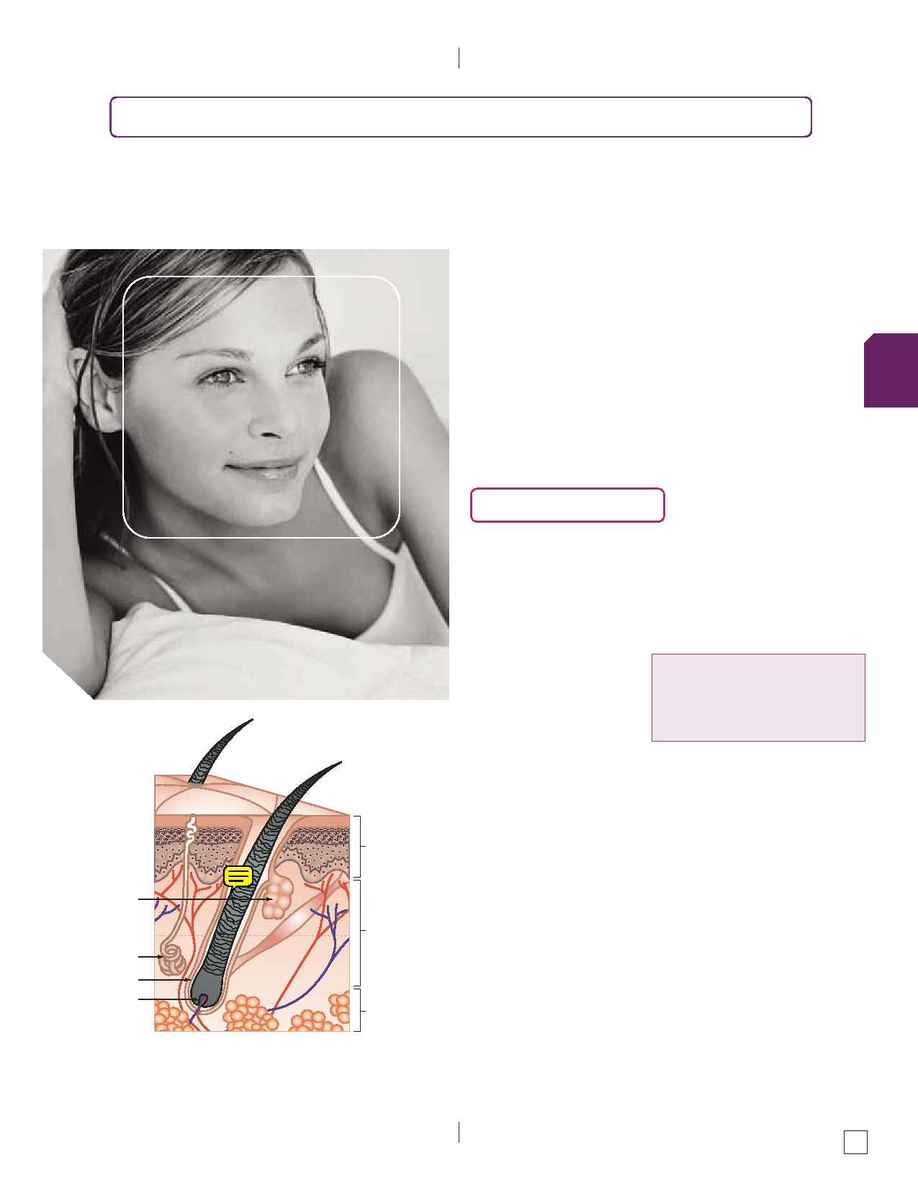
People want to look their best. That is why more people than ever before are seeking temporary or
permanent removal of unwanted hair. Temporary hair removal procedures include shaving, the use of
chemical depilatories, tweezing and waxing. Permanent hair removal methods, such as electrolysis and
laser hair removal, require the use of electrical
equipment and specialized training and licensing.
The process of removing hair from the follicle is
referred to as epilation.
As with any treatment, it is important to
understand the structure and function of what
you are working with to achieve the desired
results. For hair removal, you will need to be
familiar with the hair growth cycle.
Hair Growth Cycle
By learning about the hair growth cycle, you will
come to understand how each method of hair
removal works and why certain techniques last
longer than others.
The hair follicle
originates in the
dermis, where it is
rooted in the dermal
papilla bulb and nourished by the capillaries
that carry blood and oxygen to the bulb. Follicles
may contain more than one hair, each in various
stages of growth.
There can be up to 100 follicles in one square
centimeter of skin. An even greater number can
be found in more dense areas, such as the back,
where there might be up to 150 follicles in one
square centimeter of skin. Sebaceous glands
that secrete oil to lubricate the hair and skin
are also attached to the follicles. Overactive
sebaceous glands lead to oily hair and skin.
h a i r r e m o v a l
371
Salon Fundamentals
TM
Esthetics
H A I R G R O W T H A N D R E M O VA L M E T H O D S
Hair does not grow after
death because there is no
nourishment from the blood.
11
Stratum Corneum
Stratum Lucidum
Stratum Granulosum
Stratum Spinosum
Stratum Germinativum
Papillary Layer
Reticular Layer
Papilla
Sudoriferous
(Sweat) Gland
Hair Follicle
Sebaceous Gland
Epidermis
Dermis
Subcutaneous
